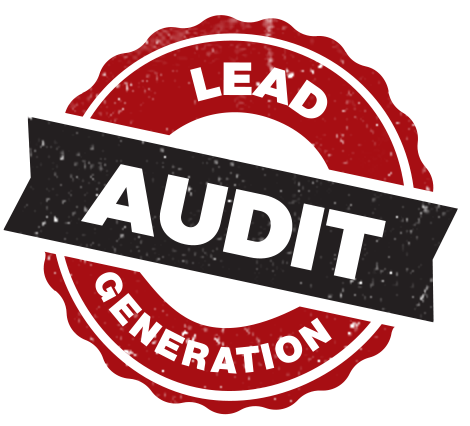Posted by Rich Harshaw on November 20, 2017.

Ever take your kids to a huge amusement park?
I’m talking parks like Cedar Point, Six Flags, and Universal Studios. The ones with dozens of attractions, $5 bottles of water, and outrageously long lines.
The wait for a two-minute ride at these parks can be ridiculous—sometimes over two hours.
It’s an agonizing journey as you slowly shuffle toward your destination, corralled like cattle between those metal railings. Especially if the sun is beating down on your head, you’re thirsty, and your kid tells you he has to pee an hour into the wait.
And what makes matters worse? When you see another line next to yours… this one with very few people.
The “Fast Pass” people.
These rare creatures paid extra to skip the long lines. They get to walk through a special sectioned off area, bypassing all you chumps withering away in the “normal” line.
The “Fast Pass” folks wait 10 minutes tops before they ride. Then they hop, skip, and step their merry way to the next attraction, cutting in front of the next set of saps who didn’t pay a few extra bucks like they did.
By the time you get to the front of the line for the FIRST ride, Fast Passers are already on their fifth attraction.
It’s a bummer for you. But awesome for them.
And you can’t begrudge them. You, too, had the option to upgrade to “Fast Pass.” But you wanted to save the few extra bucks. “I’ll just wait it out,” you say. “How bad can it be, really?”
It’s the same with contractors and pay-per-click. While SEO is the agonizingly long wait in line for a ride, PPC is the “Fast Pass” to skip the line and go straight to #1 on Google.
Why?
SEO can take a looonnnggg time to bear fruit. Expect to wait anywhere from six to twelve months just to START seeing results.
But PPC?
It’s immediate. You cut in front of all of your competitors… even the ones who rank #1 organically (after they spent months to YEARS trying to get there… suckers).
The other great thing is that you can use PPC to “skip ahead” while saving your spot in the SEO line. PPC can get you leads right here and now, while your SEO methodically works its way to the top.
But I know what you’re thinking… “Rich, I’ve tried PPC before, and it was a terrible experience!”
I hear you. But every bad thing I’ve ever heard a contractor say about PPC comes down to the company they hired.
Huge budgets and poor results are the M.O. for the typical pay-per-click provider. That’s because they focus on CLICKS… not LEADS.
Sure, clicks are nice. But leads produce sales.
That’s why MYM’s No-Risk PPC Lead Generation is completely different than every other pay-per-click service out there. By focusing on (and guaranteeing) actual leads, we eliminate all of the problems contractors have with usual PPC.
Allow me to address the most common objections I hear about PPC… and why they are non-issues with No-Risk PPC Lead Generation.
Objection 1: It’s Too Much Money
Compared to what, exactly? Other lead-generation methods? SEO? A can of Mountain Dew?
The truth is, yes, a bad PPC company will blow through your budget in the blink of an eye. But a capable PPC company can get you red-hot PPC leads for dirt cheap.
No-Risk PPC Lead Generation is in the “leads for dirt cheap” category. We guarantee PPC leads for $200 or less. That means you’ll NEVER, EVER spend more than $200 per lead.
We even take things a step further. We do NOT require a monthly PPC budget. You tell us the amount of leads you want per month, and we get them for you. After we supply them, you pay for the leads. The only thing we charge for is a reasonable $1,000 monthly management fee, which we waive for the first three months to prove our program will work for you.
Objection 2: PPC Leads Aren’t As Good As SEO Leads
That’s just plain wrong. PPC leads are usually BETTER than SEO leads. The type of prospect who clicks a PPC ad is typically ready to move forward immediately or in the near future.
I can see where this objection comes from, though. Most PPC companies count EVERYTHING as a lead—wrong numbers, calls from outside your service area, and so on. So it can seem like pay-per-click is a crummy a lead source. In reality, though, it’s just your PPC company’s loose definition of a lead.
At MYM, the only thing we count as a PPC lead is someone who contacts you in your service area looking for what YOU provide. If you’re a replacement window company, we don’t consider it a lead when someone wants to repair their iPhone screen… or is 150 miles outside your service area… or wants to replace one window when you require a minimum of five. End of story.
Objection 3: It Doesn’t Work
Neither does a Silverado if Chevy doesn’t put an engine under the hood. Neither does LeBron James if he cuts off his own leg. In other words… of course PPC won’t work if it’s not set up right or running properly.
But a contractor’s PPC campaign in the hands of the RIGHT company is without a doubt one of the fastest ways to increase lead flow.
For example, some of our PPC clients start getting leads just HOURS after we launch their campaigns. I’m not saying that will be your exact experience. But you WILL begin to generate leads very, very quickly.

“Fast Pass” Ahead of Your Competitors Today
Sure, PPC costs money. But when you invest that money in a campaign run by a company with a proven track record, you can start seeing huge ROIs very quickly.
Let MYM prove it. Head over to our No Risk PPC page or email noriskppc@mymonline.com now to sign up for MYM No-Risk PPC Lead Generation. We’ll waive the monthly management fee for three months, so ALL you pay for is the leads (which will be no more than $200 per lead). There is no commitment, so you can stop anytime. There is literally ZERO risk on your part.
P.S. Next post, I’ll answer the one question the smartest contractors ask me about PPC. Stay tuned to see what it is—and if this question has been on YOUR mind….
Posted by Rich Harshaw on November 2, 2017.

You’ve probably never thought about it, but that “HTTP” in your web address plays an important role in your website’s security and visibility.
HTTP stands for “Hypertext Transfer Protocol.” It transfers data from a website to a web browser. HTTP is why it’s possible to view websites on your computer.
But HTTP is about to go the way of the dodo… and it may be cause for worry.
Here’s the deal…
When someone visits your website, it transfers a certain type of data from that person’s computer. If a website is HTTP, that data that passes through unencrypted, and can therefore be intercepted by nefarious third parties. These parties can then use the information to track a website visitor’s online “movements” and steal their precious private info.
To combat this issue, the internet is gradually switching to a more secure communication protocol known as HTTPS.
HTTPS stands for… drum roll, please… “Hypertext Transfer Protocol Secure.”
Without getting into too much geek-speak, HTTPS encrypts data transferred over the web to keep that data secure. It does this through a Secure Sockets Layer (SSL).
Websites that use HTTPS reap a number of benefits:
-
Higher search engine rankings
HTTPS websites have the SEO edge over HTTP websites. Search engines like to make sure that the websites they’re sending their users to are safe. If you’re vying with a competitor for the top spot on the results page, HTTPS can be the tiebreaker.
-
Better website security (duh!)
I already covered this above. HTTPS encrypts data that’s sent between a browser and a website. With HTTPS, no one can “spy” on your website visitors, track their activities, or steal their information.
-
More user trust
As HTTPS becomes more prevalent, the general public will take notice. When they see HTTPS in front of your website address, they’ll know that they’re information is safe while they’re browsing your website. It’s a subtle yet effective way to immediately build trust with your website visitors. Plus, this nifty lock icon shows up next to your website address in some web browsers:

In a nutshell, here’s how to switch from HTTP to HTTPS:
- Buy an SSL certificate and install it on your server.
- Update hard-coded links in your robots.txt files to HTTPS.
- Set up 301 redirects from HTTP to HTTPS. This informs search engines that you’ve changed your website’s addresses and also automatically redirects your old HTTP address to the new HTTPS address.
It’s actually a bit more complicated than this, but those are the basic steps.
Naturally, contractors who partner with MYM don’t have to fry their brains fussing over 301 redirects, SSL certificates, and robots.txt files.
Over the course of the last few months, we’ve moved all of our clients over to HTTPS. Would-be hackers all over the country wept.
If you’d like to keep your website safe and benefit from our internet-marketing services the way our clients do, get in touch with us in one of two ways:
- Pick up that thing you use to surf ESPN.com and check emails, and call us at (817) 416-4333.
- Visit https://mymonline.com/ and use the chat box in the lower-right corner to speak to an MYM representative immediately.
P.S. HTTPS is here to stay. It’ll eventually replace HTTP completely. That’s why it’s best to hop on board the HTTPS train right now, before search engines factor even more heavily into rankings. Do it now, and thank me later.
Posted by Rich Harshaw on July 17, 2017.

My dad was a real estate guy. And when I was young, he taught me the value of knowing your numbers.
When he dropped me off at BYU my freshman year, he gave me the calculator I still use to this day (I won’t say “over twenty-five years later,” because I’d be dating myself): the HP-12C Financial.
The thing is older than my oldest child, but it still works like a charm.
Since it’s a financial calculator, it calculates everything “backward,” which makes it confusing for the uninitiated. Seeing someone try to use it is like watching a caveman trying to operate an iPhone.
It’s pretty fun to witness.
Regardless of how you like to crunch your numbers, though, make no mistake—your calculator is your most important marketing tool.
By knowing your numbers, you can determine your marketing budget and how much advertising you can accomplish.
Let me show you a wild example.
An HVAC company wanted to target homeowners whose heat pumps were likely to fail within the next few years with a postcard campaign. The company had made a series of about six postcards they’d send every six weeks to a thousand homeowners who had heaters between 10 and 12 years old.
The goal was to get the homeowners to replace their heaters BEFORE they broke down. This would likely happen in the winter, which is a busy season for HVAC companies. Homeowners with broken heaters would have to suffer days in an ice-cold house while the HVAC company tried to fit them into their overloaded rotation.
As I reviewed this client’s marketing strategy, I had an overwhelming sense their campaign was going to fail.
Getting people to spend thousands of dollars on a problem they MIGHT have in the future can be a colossal feat. The client reasoned that “the longer you wait to replace your heat pump, the bigger the failure risk” would get people to take action.
I countered with “the longer a homeowner’s heat pump works, the more convinced they’ll become that it will never break.”
An ounce of prevention might be worth a pound of cure. But when we’re talking about people parting with their money, spending oodles of it on preventative measures isn’t something most folks are dying to do.
Think about it… do people buy treadmills BEFORE they get fat? Or those extended television warranties the cashier at Best Buy always tries to hock?
Nope.
But then the client told me something that changed the playing field.
He said it’s not a matter of “if” these heat pumps will fail—they WILL fail, guaranteed.
He said these heat pumps NEVER last longer than 13 years, so homeowners with a 10-year-old heating pump would without a doubt need one within the next 36 months. Period.
I asked him how sure he was the pumps would fail. I asked, “Would you bet your life that 100% of the pumps will fail by the time they’re 13?”
He said he’d bet his life that 90 percent of them would.
Time to bust out the ol’ HP-12C.
The client’s average sale was $8K with a gross profit of $3.5K. So 1,000 prospects on the client’s list is $3.5 million in potential gross over the next three years—$3.15 million if you exclude the 10% of heat pumps that might not fail.
Think about that—a guaranteed $3.1 million in gross profits over the next three years… just sitting there, ripe for the plucking.
Are you salivating yet?
A better question… how much cash would you be willing to spend to get that $3.1 million?
If it were me, I’d spend at least 10 percent of that number: $310K.
Why? So I could unleash the Wall Drug method (incessantly hammering prospects with your marketing message).
To start, I’d send one 6” x 11” inch postcard per week to each of the 1,000 prospects. That’s 52,000 postcards a year for three years, totaling roughly 150,000.
If every postcard costs 60 cents to send, the total cost for the 36-month campaign would be only $90K.
This is chump change compared to the anticipated gross profit, so let’s bump it up to two postcards per week—a little more than 100 per year per prospect. That’ll cost $180K, not including all the customers we’d remove from the list once they actually become customers and we quit mailing them. And we’ve still got $130K and change to spend.
Next, we’ll get a little old school. I’d hire a college-aged kid to knock on every one of those 1,000 doors every month.
If he knocked five days a week, he’d have to hit only 50 doors per day—easily done assuming all the homes are in a reasonably close proximity. After a couple months go by, the homeowners would immediately recognize my door knocker as the dude from the company that sends all the postcards that keeps coming by. If I paid that door knocker $3,000 per month, it would eat $108K out of my three-year budget—leaving me with just $72K remaining.
So let’s think of something fun to do with the remaining 70 grand. How about creating something for my door knocker to hand to people when he knocks their doors? Like fridge magnets. Or calendars. Or an ice cream scooper. Something—anything—for crying out loud.
At this point, you might be thinking, “Uh, Rich… so what message goes on all of these marketing touches?”
Here’s the thing: At the rate, we’re hitting prospects, it almost doesn’t matter what I put in the marketing message, as long as it’s something like “Hey, we can replace your freaking heat pump when it goes out?”
Seriously—this is more about what the calculator says than the messaging.
Now put yourself in your prospect’s shoes. Imagine receiving multiple postcards per week from an HVAC company warning you that your heat pump will most definitely fail within three years. How many weeks would it take before you started noticing the postcards? As in, “Hey, this company is sending me a crap load of mail!”? Around four or five weeks, probably.
Now think ahead 18 months. You’ve received two pieces of mail from the company every week for a year and a half, and the college kid has knocked on your door about 20 times. Is there any chance at all that you’re not aware of who this company is? Is there any conceivable way you DON’T know why this company is contacting you? No way, José.
This is what I call “Wall Drugging” potential customers. Hit them so often that they can’t help but recognize your name and brand.
Listen. I don’t want to hear, “But my company is different. We don’t sell heat pumps, and we don’t know exactly who our customers will be.” The moral of the story is to look at your numbers and determine how much you can spend to acquire a new sale.
How could you best spend that money? Use your calculator to find answers to these questions. You just might find a formula for success that you hadn’t expected.
Compliments of HP.
Save
Posted by Rich Harshaw on April 19, 2017.

Let’s take a quick trip to Imaginary Land…
Say you want to bring on another salesperson.
After poking around, you find a guy who has been in home improvement sales for 15 years.
You bring him in for an interview, and he nails it. He clearly has a ton of industry knowledge.
You call his old boss, who gushes about him. He tells you that your new sales guy knows how to close.
After you work out a base salary and commission package with the guy, he signs on.
You put him through your company’s sales training. He absorbs everything like a sponge.
So far, so great.
After a couple training and shadowing your top guy, for a few weeks the moment of truth comes. You hand him 10 leads…
… and he closes one sale.
Your company’s average closing rate is 33% for first-call closes, and 40% for follow ups.
Uh-oh.
The second week doesn’t go so hot, either: 12 issued leads, two sales.
The guy is a newbie, so you cut him some slack.
But things don’t improve in week three: 11 leads, and just a single sale.
You begin to get nervous.
You direct your sales manager to dig into the issue. He discovers your new salesman is not following your sales protocol… at all.
He drones on and on. He doesn’t ask prospects enough questions. He gets flustered after objections.
At this point, you’ve invested six weeks and over $10,000 in his hiring, training, leads, and salary.
Do you get rid of him?
Do you give him another chance?
Do you hop in your DeLorean, gun it to 88mph, and travel back in time to start over?
The answer is obvious…
YOU FIRE HIM, PRONTO!
He is not just falling short of your averages by a giant margin, but he’s also costing you a lot in lost revenue. If your typical sale is $8,000, the eight sales he lost cost you $32,000 in gross profit. You really have no choice but to fire him.
Logically, you’d also give the boot to any severely underperforming employee. Dreadful accountants, substandard installers, bad receptionists—anyone who isn’t pulling their weight.
So why do so many contractors stubbornly clinging to websites that don’t get the job done?
By that, I mean any website that doesn’t do what websites are supposed to do: Make prospects fall in love with your company so they contact you, schedule appointments, and hire you.
Actually, I already know the answer to my question. I’ve asked hundreds and hundreds of remodelers.
Here is usually what they tell me…
-
Don’t Realize The Website Is Not Performing
This is by far the most common reason. Business owners often have no idea their losing prospects left and right because their sites lack the power to turn lookers into buyers. They don’t understand the key elements of conversion, which includes an Identity, headline funnel, social proof, and evidence.
-
It’s A New Website And They Don’t Want To Start Over
This the second most common reason, but it makes zero sense. This is like holding on to the salesperson in the story above simply because you’ve already invested time and money in him. It’s an emotional, even prideful decision that’s illogical. It’s ALWAYS more expensive to keep an underperforming website (or employee) than it is to bite the bullet, start over, and do it right.
-
No Confidence They Can Do Better
This relates to #1. It’s the misconception that all websites will perform about the same as long as they look relatively good. In addition, many business owners have already been through the “website development” ringer with a few marketing companies over the years, and they’re convinced that they all stink. While that conclusion is largely true, it’s not ALWAYS true.
-
Get Compliments About Website
Cognitive dissonance on display here. It’s tough to believe your website is underperforming when everyone says it’s great. But consider the “tryout” episodes of American Idol. Someone who is AWFUL auditions and honestly thinks they are amazing. For years, family and friends have told them they are great. But when they are scrutinized by professional talent evaluators—and common sense—they’re clearly terrible. The “American Idol Effect” happens all the time with websites.
-
Don’t Understand How Important A Website Is
This is becoming rarer these days. But there ARE still business owners who are convinced that only their repeat and referral business they’ve gotten the past 30 years can continue to sustain them. They simply don’t believe their lousy website hurts their sales. Except that’s not true. It’s exceptionally difficult to see the business you’re missing from a crummy website—after all, you don’t see (and therefore miss) the people who never call.
Is This You?
Clearly, a terrible salesperson is easier to spot than a money-sucking website. That’s why we provide free Website Conversion Audit for businesses curious to know if their website is pulling its weight.
We’ll scrutinize your website and grade it a 0 to 100 scale based on 18 specific elements.
It’s our opinion, but trust me… if we say your site scores a 32 out of 100, you have a lot of work to do. (By the way, the average score is 32 out of 100… yikes!) We’ll also analyze your SEO and PPC rankings and grade your “website visibility.”
If you discover you’re hemorrhaging opportunities, give yourself a break.
You’re in business, and you’re going to make mistakes. Those mistakes are going to cost you money sometimes. It stinks, but it’s called life. Just don’t continue to knowingly make the same mistake—that’s just silly!
Click here now to get your Website Conversion Audit.
P.S. Since I’m on the topic of great websites, I want to remind you about MYM’s Awesome Contractor-Referral Giveaway. If you know a contractor or company that needs to “fire” their current website and replace it with one that gets REAL results, refer them to us now. You’ll win an AMAZING gift if they become the next MYM client.












